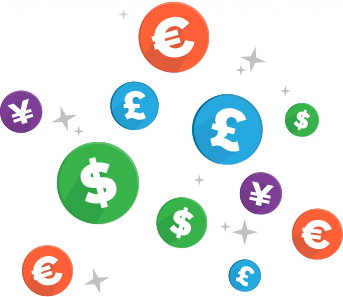The official currency of Sweden is the Swedish Krona and its abbreviation is SEK. The currency sign of SEK is ?kr? and the plural of krona is kronor. Although it is used in only one country, the Sweden currency is on the 7th rank in the world?s most traded currencies category. 100 öre make one krona.
The central bank of Sweden is known as the Riksbank. After the Second World War, the Swedish krona was pegged to the
US dollar, however currently, the SEK is not pegged to any of the international currencies.
Some facts that you ought to know about the sweden currency:
1. The short name for the Swedish Krona is SEK.
2. The most frequently used coins are ?1 kr, 2 kr, 5 kr, and 10 kr.
3. The most commonly used banknotes include 20 kr, 50 kr, 100 kr, 200 kr, and 500 kr. 1000 kr is a rarely used bill of the Sweden currency.
History of Sweden Krona
The Swedish Krona, also known as the SEK, has a rich history dating back to the 14th century. Initially, Sweden's currency was a mixture of coins from neighbouring countries, including Denmark, Germany, and Norway. However, the first official currency in Sweden was introduced in 1624 under the reign of King Gustav II Adolf, and it was called the Riksdaler.
The Riksdaler was a silver currency that was equivalent to eight marks, which were later divided into 96 pennies. The Riksdaler became the primary currency in Sweden and was in circulation until the 19th century.
In 1855, the Riksdaler was replaced by the Krona, which was equivalent to 100 öre. The Krona was made of gold and was introduced during a time of economic growth in Sweden. It was the first time that Sweden had a decimalised currency system, which made transactions easier and more convenient.
Sweden's economy suffered during World War I, and the Krona was devalued. In 1924, the Swedish government introduced the gold exchange standard, which meant that the Krona was pegged to gold, and the exchange rate was fixed. This system remained in place until the 1930s when it was abandoned due to the Great Depression.
During World War II, the Swedish government introduced currency controls, which restricted the flow of capital in and out of the country. After the war, the Krona was devalued several times, and in 1952, a new currency regime was introduced. The new regime was based on the Bretton Woods system, which meant that the Krona was pegged to the US dollar.
In 1971, the Bretton Woods system was abandoned, and the Swedish government introduced a floating exchange rate system, which meant that the Krona was allowed to fluctuate in value based on supply and demand. This system remains in place today, and the Swedish Central Bank plays an active role in managing the Krona's value.
Over the years, the Krona has remained a stable and reliable currency, and it is widely used in international trade. In recent years, Krona has faced some challenges, including low inflation and negative interest rates. However, the Swedish government and the Central Bank continue to work to maintain Krona's stability and ensure its continued success in the global marketplace.
Factors Affecting Sweden Krona
Here are some of the main factors that influence the value of the Swedish Krona:
1. Interest rates
Interest rates are one of the most important factors affecting the value of a currency. The Swedish central bank, known as the Riksbank, controls the country's interest rates. When the Riksbank increases interest rates, it makes the Krona more attractive to investors, which can cause the currency to appreciate. On the other hand, when interest rates are lowered, it can make the Krona less appealing, leading to a depreciation in value.
2. Economic growth
Economic growth is another key factor that affects the value of the Krona. When the Swedish economy is growing, it can attract foreign investment and increase demand for the Krona. This can lead to an increase in the value of the currency. Conversely, if the economy is contracting, it can reduce demand for the Krona and lead to a decrease in its value.
3. Inflation
The rate at which the cost of goods and services rises over time is referred to as inflation. The value of a currency can be reduced by significant inflation. In contrast, when inflation is low, it can increase the value of a currency. The Riksbank monitors inflation and adjusts interest rates accordingly to maintain stable prices.
4. Political stability
A stable political environment can lead to increased foreign investment and economic growth, which can increase demand for the currency. On the other hand, political instability can create uncertainty and reduce demand for the Krona, causing it to depreciate.
5. Global market conditions
Global market conditions such as trade tensions, changes in commodity prices, and shifts in investor sentiment impact the value of the Krona. For example, if there is a global economic downturn, it can reduce demand for the Krona, causing it to depreciate.


















